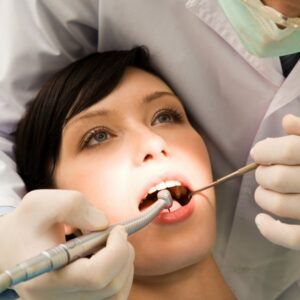The Complete Guide to Placing Dental Implants
Dental Implants
FOR DENTISTS, DENTAL ASSISTANTS OR ANYONE WHO WANTS TO KNOW MORE ABOUT PLACING DENTAL IMPLANTS:
A Comprehensive Checklist To Help You Insure The Safe, Successful and Predictable Placement of Dental Implants
The biggest keys to your implant success are
· Yourdiagnosis
· YourCaseSelection
· Yourtreatmentplan.
There are a huge number of diagnostic factors, decisions and considerations in the successful placement of dental implants.
These diagnostic factors, decisions and considerations can be compared to a pilot flying a plane.
A pilot needs to make quick, accurate decisions to safely fly a plane. They use checklists to insure safety and predictability.
Doctors need to make quick, accurate decisions when doing implant surgeries. Doctors use checklists to insure safety and predictably.
I’ve included the exact comprehensive dental implant checklists that we use to insure implant success.
With the use of these checklists you will learn to make great decisions and great diagnoses.
So let’s get started.
5 Keys to Dental Implant Success
- Case Selection
- Diagnosis
- Treatment Planning
- Informed Consent
- Home Care
Case Selection
The most important criteria for dental implant success is your case selection. Not every patient qualifies for implants.
Some patients you can quickly spot do not qualify for implants. Other patients are more borderline.
You want to spot possible problems or complications before they occur so that you can address them and prevent them.
10 Questions To Ask Before Doing An Implant Evaluation
- What are the patient’s medical problems?
- Are there medical problems that can prevent proper healing?
- What are the patient’s dental problems?
- What is the patient’s family dental history?
- How is the patient’s home care?
- How is the patient’s diet?
- What is the patient willing to do?
- Are there lifestyle limitations?
- How is the patient’s attitude towards dentistry?
- Will you enjoy treating your patient and working with them?
Diagnosis
The “Implant Diagnostic Checklist” (See Below) is super thorough.
It was designed to cover as much as possible.
As you learn the information in the “Implant Diagnostic Checklist” you may want to
shorten it into something like the “Implant Diagnostic Summary” (See Below). Most people do not use checklists correctly.
Most people make their checklists too long and too complicated.
Your initial checklist SHOULD BE LONG!
It should be super thorough. You want to cover everything.
But then you may want to shorten it.
So think about the most important points and they become your checklist.
It may take several attempts to get a usable checklist.
Most people abandon their checklists because they never shorten them into a usable format.
To really benefit from checklists, check out the book “The Checklist Manifesto” by Dr. Atul Gawande. Dr. Gawande is a surgeon who used checklists to improve his surgical success.
Print out the checklist below and use it when planning your implant cases. Be sure to record your findings and notes in your patient’s chart.
Implant Diagnostic Checklist
- Photos
- Digital Scans
- Study Models
- Diagnostic Wax Up
- How far can the patient open their mouth?
- How much keratinized attached tissue? Measure with perio probe.
- X-rays: Patient Position – Want occlusal plane parallel to floor.
- 3D X-Ray (Cone Beam) / Panoramic X-ray. Patient position effects measurements and implant selection.
- Periapical X-rays.
- Bitewing X-rays.
- Check for Dental Pathology
a. Review panoramic/3D Xray, PA’s and Bitewingsb. Missing teeth c. Bone loss
d. Radiolucencies - 3D (Cone Beam) Radiographic ReviewBe sure to record your findings
a. Check for cysts in maxilla and mandible b. Look at sinuses
c. Check for asymmetries
This is super important. Nothing like planning an implant for tooth #18 only to find out the patient can not open wide enough to do your osteotomy.
Must have at least 2mm of keratinized attached tissue around implants. This is especially important by anterior teeth.
Maxilla Review
a. Measure from ridge to sinus
b. Floor of the nose
c. Greater Palatine neurovascular bundle
d. Incisive Canal neurovascular bundle – trace nerve
Mandible Review
a. Inferior Alveolar neurovascular bundle – trace nerve
b. Mental Nerve – trace nerve
c. Submandibular Fossa
e. Lingual artery and nerve – trace nerve
f. Lingual artery and nerve on linguals of lower central incisors
Coronal View
a. Review for cysts in sinus b. Check TMJ
Note: Do not use the coronal view to measure the bucco-lingual thickness of the ridge.
Sagittal View
a. evaluate floor of the nose and sinus
Axial View – Helpful for determining implant platform size
a. Measure bucco-lingual width of ridge
b. Measure spacing from adjacent teeth and implants c. Check Nasopalatine Canal – Trace
Tangential View
a. Trace Nerve
1. Trace mandibular canal
2. Trace mental foramen
3. Trace incisive canal for upper implant
b. Measure mesio-distal width for planned implant c. Check topography of ridge
1. Does ridge need to be flattened?
Implant Selection
- Turn on margin of safety (This is a setting on 3D (Cone Beam) X-rays
- Select Implant
- Keep implants at least 1.5mm from adjacent teeth
- Keep implants at least 3mm from adjacent implants.
Check apical areas of implants. You do not want the apex of implants too close to adjacent implants or too close to teeth for circulation reasons.
For esthetic reasons, sometimes bridges are better in the anterior region.
Cross Sectional View
-
- Measure bucco-lingual width of ridge
- Measure distance to nerve
- Measure distance to sinus
- Nasopalatine Canal – Trace
- For Mandible – Check submandibular fossa
- Check exit of Mental Nerve and position of foramen
Volumetric Mode With Contours
a. Alter radio density
b. Evaluate soft tissue
c. Evaluate contours of duplicate denture d. Evaluate sinus lining
Surface Mode
a. Alter radio density
b. Check for position of mental foramen c. Check for possible dehiscence
d. Check occlusal view of ridge
Configure Display Mode – For Dentures
a. Change radio density
b. Display Duplicate Denture. Alter the transparency of the bone
(0% transparent) and the soft tissue(100% transparent). Play with the radio density of each to start to see the outline of the Duplicate Denture Guide. It is important to see the flange so that you can know where to place the stabilizing pins in the surgical guide.
When measuring from the center of an implant, the spacing between anterior teeth are different from premolars.
When measuring from the center of an implant, the spacing between premolars are different from molars.
-
- Make sure there is at least 2mm of bone on the buccal and lingual of implants
- Position anterior implant tops or platforms 3-4 mm from the CEJ (Cemento Enamel Junction) of adjacent teeth but no further apical than 5mm as measured from the base of the adjacent teeth contact points.
- You want both the platform and the height of the implant completely level in the anterior region.
- For screw retained crowns:
-
- For molars center the screw access hole
- For anterior teeth position the screw access hole slightly lingual or palatal of the incisal edges.
- 7mm minimum clearance between implant platform and opposing tooth.
- Check angulations bucco-lingually and mesial-distally so that it reflects the angulations of the neighboring tooth. Superimpose implant on neighboring tooth to get proper angulations.
- 2mm of bone buccal- lingually.Start with an axial image.
Check how implant platform will fit buccal-lingually. - 2mm of bone mesial-distally
- Check CEJ (Cemento Enamel Junction)
- Check angulation of roots
- Check angulation of clinical crown
- Molars: Make sure the guide sleeve is centered relative to the central groove.
- Rotate and adjust implant from both platform side and apex side to maximize the amount of bone.
- Tangential Screen – adjust view so you can see implants as well as roots of adjacent teeth. Look at platform position and rough angulations.
- Align the center of surgical guide sleeve with a line running to the central groove of the opposing arch.
- Cut thru the model and remove the opposing arch. This is done in the 3D view in Volumetric Mode. Look at the guide sleeve relative to adjacent teeth. Fine tune mesial/distal and buccal/lingual positioning.
- Check spacing and angulations. Spacing and angulations vary between multiple implants. In molar areas, implants can be more than 3mm apart.
Remember the Curve of Spee and the Curve of Wilson.
-
- Apex Anterior Implants – Be careful that the apexes are not too close together. If apexes are too close together, circulation may not be adequate. Sometimes it is better to use bridges in the anterior region.
- Anterior Implants – Want center of implant exactly where crown should emerge. Check for symmetry. This can affect esthetics.
- Anterior Implants – Want both platform and bone completely level
Surgical Guides
Check the angle of the guide sleeve relative to the adjacent teeth. Make sure that the guide sleeve will not hit the gingiva. When teeth are close together, you have to make sure the guide sleeve will not hit the adjacent teeth. If the guide sleeve hits the adjacent teeth, you will not be able to seat your surgical guide at the time of surgery.
-
- Guide Sleeve and drill paths
For posterior teeth try to center guide sleeve in edentulous space and line up with adjacent teeth. Make sure guide sleeve is not touching adjacent tooth or too close to the adjacent guide sleeve.Allow at least 1mm on either side of the guide sleeve for acrylic.
Sometimes if you lack space for a guide sleeve, you can plan the surgical guide for a smaller implant. Then remove the surgical guide and use the last drill non guided. Place the correct size implant free handed. This may occur when the teeth are close together.
- Line up guide sleeve with central grooves and center buccal/lingually. Look at the guide sleeve in 3D.
- View guide sleeve relative to contacts of adjacent teeth.
- Make sure the implant drill will not hit adjacent teeth.
- Guide Sleeve and drill paths
Drill Path
- Turn on drill path in software
- Check where the drill path hits the opposing tooth. Check where cusps, fossae and marginal ridges go.
- Software – Turn on and show Margin of Safety
- Software – Turn on Guide Sleeve
- Software – Turn on Pilot Drill Path
- Software – Turn on Final Drill Path
- Software – Turn on Crown Proposal
- Anterior Esthetics – Drill path very important in anterior esthetics. Rotate apex and get it where you want it.
- Anterior Esthetics – Rotate platform until implant emerges where you want it.
- Tangential View – Look at position of sleeve relative to neighboring teeth. Possibly lean implant to decrease cantilever.
- Possibly lean implant to decrease cantilever.
- Make sure guide sleeves do not overlap. Look at the 3D view occlusally.
�?? Print out the checklist below and use it when planning your implants.
Implant Diagnostic Summary
___ Inter-Occlusal Opening
Tooth # ________
___ Bone Graft
___ Sinus Lift
___ mm Amount of Keratinized Tissue. Must have 2mm.
___ Attached Tissue Graft
___ Ridge Flattening (Height and Contour of Bone & Teeth
___ Implant Name
___ Length of Implant
___ Diameter of Implant
___ Mesial/Distal Tilt
___ Buccal/Lingual Tilt
Tooth # ________
___ Bone Graft
___ Sinus Lift
___ mm Amount of Keratinized Tissue. Must have 2mm.
___ Attached Tissue Graft
___ Ridge Flattening (Height and Contour of Bone & Teeth
___ Implant Name
___ Length of Implant
___ Diameter of Implant
___ Mesial/Distal Tilt
___ Buccal/Lingual Tilt
Tooth # ________
___ Bone Graft
___ Sinus Lift
___ mm Amount of Keratinized Tissue. Must have 2mm.
___ Attached Tissue Graft
___ Ridge Flattening (Height and Contour of Bone & Teeth
___ Implant Name
___ Length of Implant
___ Diameter of Implant
___ Mesial/Distal Tilt
___ Buccal/Lingual Tilt
Treatment Planning
I believe it is our job as Doctors to tell patients what we find and not what they need. I believe it is our job to make a thorough and accurate diagnosis.
A thorough diagnosis helps to reveal treatment options.
We can then discuss with our patients what best fits their needs.
Entire books are written about Treatment Planning and Diagnosis.
Treatment Planning will always be changing.
The bottom line: Be accurate and thorough in your diagnoses and you will develop outstanding treatment plans.
Informed Consent
Patients need to be given an understandable informed consent.
With outstanding case selection and by carefully following the 5 Keys To Dental Implant Success, dental implants can have “success rates” approaching 98% to 99%.
A 90% – 98% success rate is generally considered the “average success rate” for all
dental implants.
When explaining “success rates” to patients an easy way to communicate what the success rate means is by saying the following:
“If you have 10 implants placed in your mouth with a success rate of 90%, then 9 out of 10 implants will heal and function properly. Your body may reject 1 implant”.
If you choose to discuss a 98% “success rate” then you can say:
“If I place 100 implants, 98 of them will most likely heal and function properly. 2 out of the 100 may be rejected.”
Patients, Doctors and Support Staff often mistakenly use the word failure as opposed to rejection.
Rejection and failure are not the same thing.
Failed Implant
A failed implant is a problem with the actual implant as opposed to a healing problem or rejection problem.
A failed implant could be a split or cracked implant.
A failed implant could have stripped threading that attaches the implant to the abutment. There are more ways an implant can fail.
Fortunately implant failure very rarely occurs.
Rejected Implant
People often say “an implant failed” when what they really mean is that the “implant was rejected”.
Rejection of a dental implant is similar to rejection in other parts of the body.
By analogy and for better understanding … A Surgeon can do a hip replacement.
The Surgeon can do everything correctly. Even though the Surgeon does everything correctly, the patient’s body can reject the hip.
A similar analogy could involve a dental implant. A Dentist can place a dental implant.
The Dentist can do everything correctly. The patient’s body could reject the dental implant.
The Dentist can not control the patient’s ability to heal. Nor can the Dentist control bone density or how fast bone grows around an implant.
If a dental implant is rejected, it can often be replaced.
A good informed consent discusses “Implant Rejection and Implant Failure”. It becomes part of your diagnosis.
By discussing and documenting possible problems before treatment, it becomes part of your diagnosis. Discussing problems after treatment is often looked upon as excuses.
Don’t try to gloss over possible complications. Don’t shove an informed consent in front of a patient and say “look this over and please sign this”. I know you’re anxious to get started.
Take the time to discuss things so that your patient really comprehends and understands your informed consent.
I would rather have difficult conversations up front before treatment rather than after treatment. Patients become too emotional.
And when an undesired result occurs, and it will … a well informed patient is better able to understand and handle the situation.
Patients also need to be financially informed as to how things will be handled if an implant is rejected or fails.
You want to work with patients who like you and trust you. Good Informed Consent = Less Stress.
Less Stress = Happier Patients and Happier Staff!!!
Home Care
We have a Phase Contrast – Live Cell Analysis Microscope at our office.
We take saliva and plaque samples from our patients mouths. We can see in real time “Bacterial Messes”.
Based upon our clinical research … it is super important for implant patients to use a “WaterPik” or some kind of irrigation device.
Patients need to be instructed to angle their irrigation device into the gum and around their implants.
Patients think they are just trying to get food particles out of their mouth. While this is true, they need to be told the reason to use an irrigation device is to lower the bacterial level in their mouth which will help their implants.
The best time to use an irrigation device is before a person goes to sleep at night.
Conclusion
- Invest time upfront for an accurate and thorough diagnosis and treatment plan.
- Proper planning saves a tremendous amount of time during treatment and it saves the time of having to fix things after treatment.
- Use checklists to ensure superior results.


